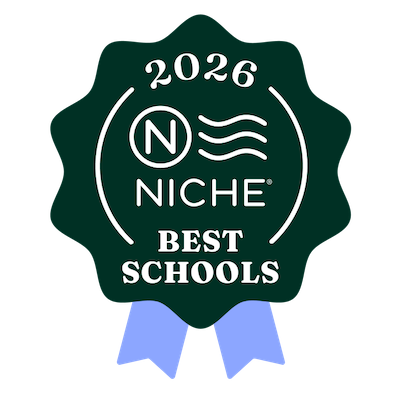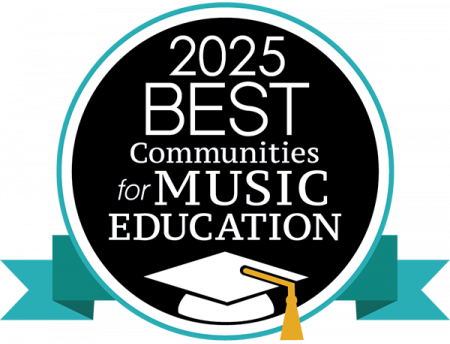Provide safe, welcoming and caring environments in which all students and staff have a sense of belonging and purpose.
Areas of Focus
Learning Environment: Positive, student-centered learning through student voice and access to instruction and school connections in a safe, supportive, and well-maintained environment.
Working Conditions: A positive and supportive environment in our schools and worksites, through staff voice, enabling all employees to perform their best work according to established responsibilities and standards, leading to increased job satisfaction and employee retention.
Professional Growth: A deliberate and personalized approach to building team members' capacity and well-being through the development of individual skills, traits and competencies, which supports individual and collective well-being as well as the division's needs.
Theory of Action
If we create student-centered learning in safe, positive, and well-maintained schools and workplaces, focused on student and staff growth, then team members will be well equipped to foster a sense of belonging and purpose.
Why this is Important
A school environment is broadly characterized by its facilities, classroom practices, school-based health supports, and disciplinary policies and practices.
- There is a strong connection between school climate and academic achievement of students (National Center on Safe Supportive Learning Environments, June 2022).
- A work environment characterized by positive working conditions has a direct relationship on employee retention (Yogita, 2015).
- A majority of employees (94%) report they would stay with an employer longer if it invested in their career (Workplace Learning Report, 2018).
Key Performance Indicators (KPIs)
The key data and metrics identified most impactful in demonstrating meaningful progress towards the division's vision, mission and priorities.
School Climate
In conjunction with the Virginia Department of Education, the division offers students in grades 4-12 the opportunity to participate in the Virginia School Survey. The survey is designed to support school and division administrators in monitoring student access to a healthy and positive environment in which they can learn, work, interact, and grow.
State administration of the survey alternates annually between middle and high school students. The division has identified 10 questions from the state survey to administer at all grade levels.
This Key Performance Indicator (KPI) is updated annually after the division receives survey results from state agencies and can be filtered by school year, school level, and school.
Note: 2023-24 data for state administered high school surveys is not currently available.
Student Connections: Elementary Schools
Participation in school organizations, clubs and teams can benefit students in key areas such as academic performance, behavior and attendance. Extracurricular activities provide students opportunities, beyond the classroom, to apply knowledge, skills, habits and traits necessary for success in future experiences.
As activities can include year-long or seasonal participation, this Key Performance Indicator (KPI) is updated quarterly during the school year and can be filtered by school year, school and grade level.
Student Connections: Middle & High Schools
Participation in school organizations, clubs and teams benefit students in key areas such as academic performance, behavior and attendance. Extracurricular activities provide students opportunities beyond the classroom to apply knowledge, skills, habits and traits necessary for future success. All middle schools and high schools offer opportunities for students in co-curricular, extracurricular and athletic/scholastic organizations.
Co-Curricular: Activities which are an extension of the formal learning experiences in a course or academic program
Extracurricular: Activities not explicitly connected to the academic learning
Athletics/Scholastic: High school activities associated with the Virginia High School League (VHSL) and middle school sports
Multiple Connections: Students involved in two or more school programs
As activities can include year-long or seasonal participation, this Key Performance Indicator (KPI) is updated quarterly during the school year and can be filtered by school year, school and grade level.
Student Attendance
Regular attendance in school improves children's success while those with irregular attendance may fall behind. The York County School Division must comply with the Code of Virginia requirements for truancy and chronic absenteeism.
The Virginia Department of Education (VDOE) defines chronic absenteeism as a student having 10% or more absences during an academic school year, regardless of whether the absence is excused or unexcused. Unexcused absences include student absences for which the school has not received notification from the family and/or the absence does not meet criteria in the YCSD Student Handbook and Conduct Code. Truancy is defined as the act of accruing one or more unexcused absences.
The division monitors student absenteeism to develop supports and interventions for those students with five or more absences. This Key Performance Indicator (KPI) is updated on the first business day of each month and can be sorted by date, year, school and type of absence.
Student Behavior
Creating a positive school environment requires collaboration between students, families and school staff. Student behavior violations and resulting disciplinary measures are governed by the YCSD Student Conduct Code. The Conduct Code is intended to ensure students learn in a safe and disruption-free environment.
Disciplinary measures include removal from class or being given detention, receiving alternative sanctions (e.g. denial of bus privileges), in-school suspension and out-of-school suspension. For more information, please review the Student Handbook and Conduct Code.
The division monitors the most common behavior violations and the resulting disciplinary measure. This Key Performance Indicator is updated quarterly and can be filtered by school year, level, and demographics.
The following student behavior categories, as defined by the VDOE, were designed to assist in recognizing the impact the behavior has on the school learning environment and to encourage responses that promote social-emotional learning competencies.
Behaviors that Impede Academic Progress (BAP):
These behaviors impede the academic progress of the student or of students. They are typically indicative of the student's lack of self-management or self-awareness. Sometimes, the student may need help in understanding how the behavior impacts others. Therefore, as a result, training in social awareness may also be indicated.
Behaviors Related to School Operations (BSO):
These behaviors interfere with the daily operation of school procedures. Students exhibiting these behaviors may need to develop self-management, self-awareness, or social awareness skills.
Relationship Behaviors (RB):
These behaviors create a negative relationship between two or more people that does not result in physical harm. Relationship behaviors affect the whole school community in that the school climate is often a reflection of how people treat one another. Students who exhibit difficulty with relationship behaviors may also have difficulty with the other social- emotional competencies.
Behaviors that Present a Safety Concern (BSC):
These behaviors create unsafe conditions for students, staff, and visitors to the school. The underlying reasons for this type of behavior may lie in any of the social-emotional competencies, so the administrator should investigate the underlying motivation for the student's behavior. Training in social awareness and decision-making is usually indicated in any behavior that creates a safety concern.
Behaviors that Endanger Self or Others (BESO):
These behaviors endanger the health, safety, or welfare of either the student or others in the school community. Behaviors that rise to this level of severity are often complex. While they are indicative of poor decision-making skills, students who exhibit these behaviors may also have developmental needs in the other social-emotional competencies.
Persistently Dangerous Behaviors (PDB):
These behaviors are described in the Virginia's Unsafe School Choice Option Policy required by the federal Every Student Succeeds Act (ESSA) of 2015.
Year One Strategies (FY23)
| Identify components of Working Conditions survey and School Climate survey best suited to gauge student and staff perception of their environments and develop plan to survey students and staff annually. | |
| Explore a transition towards an integrated VTSS framework that supports behavior, wellbeing, and instruction. | |
| Perform a review of current student connections to schools as evidenced by enrollment in clubs, athletic teams, music and drama groups, student government and any other school activities or experiences which inform next steps to increase student connections. | |
| Develop a checklist to assess the current state of the internal and external physical learning environments and implement audits of all division schools and worksites. | |
| Perform a thorough review of existing staff mentorship/coaching programs and gain staff feedback to identify successes and areas for improvement across programs and departments. |
| Implemented | Implemented/ Ongoing |
In Progress | Pending | Discontinued |
Year Two Strategies (FY24)
| Lead school-based efforts to address chronic absenteeism rates by reducing the number of students with 5 or more unexcused absences. | |
| Implement VTSS Tier II and Tier III processes related to integrated tiers of support for students with fidelity. | |
| Improve learning environments utilizing FY23 student climate survey data. | |
| Create and enact a plan to improve the internal and external physical learning environments of each division school. | |
| Develop targeted, site-based plans which improve employee satisfaction and commitment using FY23 working conditions data and employee feedback. |
| Implemented | Implemented/ Ongoing |
In Progress | Pending | Discontinued |
Year Three Strategies (FY25)
| Identify trends within annual student climate and staff working conditions surveys; Collaborate with school and department leaders to implement responsive actions. |
| Continue efforts to improve interior and exterior learning and working environments of each division school. |
| Provide direct support to schools on student attendance, behavior, and mental wellness structures. |





